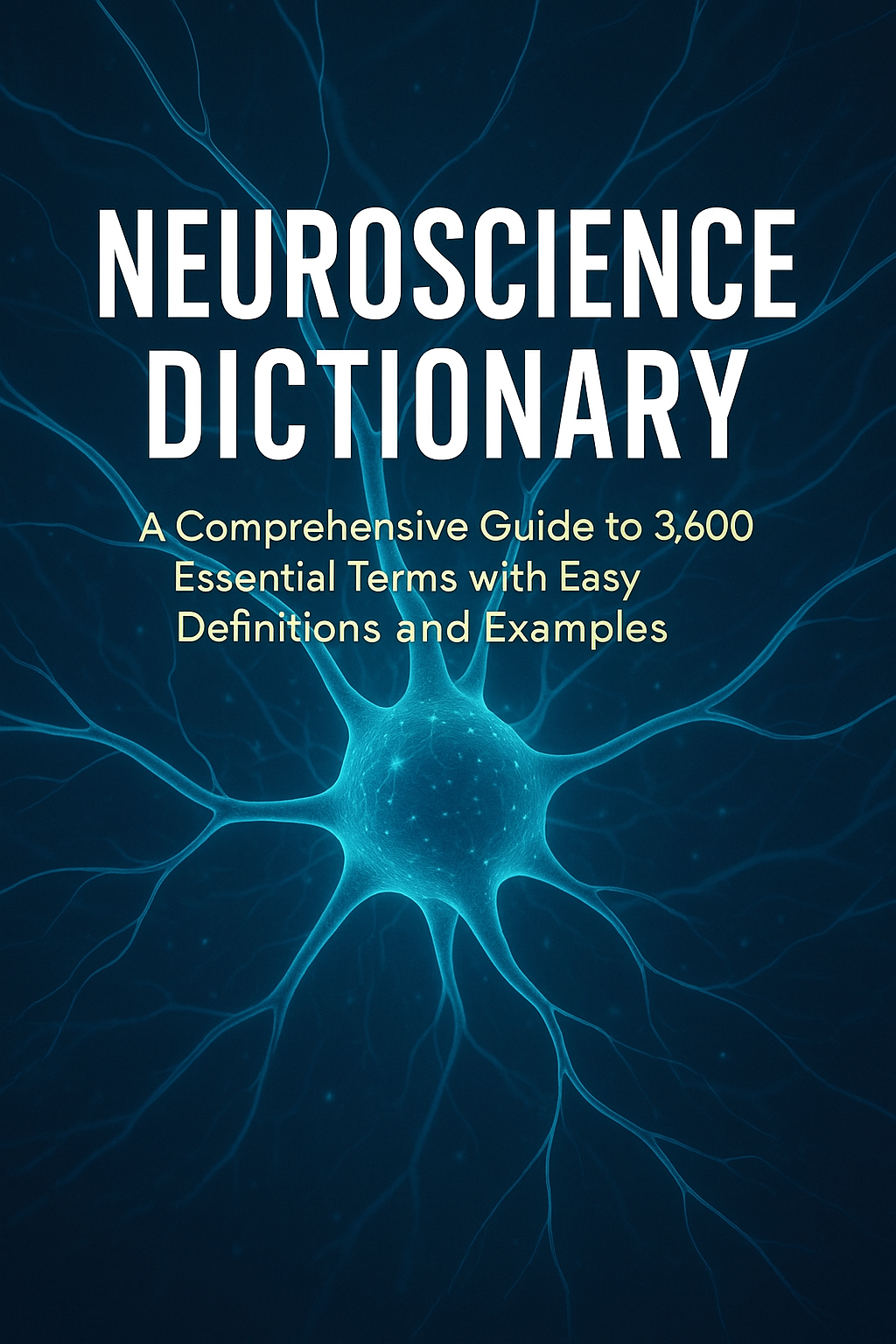Neuroscience Dictionary
A Comprehensive Guide to 3,600 Essential Terms with Easy Definitions and Examples

A Comprehensive Guide to 3,600 Essential Terms with Easy Definitions and Examples

Choose your preferred format. Replace the links below with your live store pages.
Instant access on Android, iOS, and web via Google Play Books.
Listen on the go with Google Play Audiobooks.
The human brain is often described as the most complex structure in the known universe. It contains billions of neurons, trillions of connections, and an infinite potential for thought, memory, behavior, and emotion. Understanding this intricate organ is not only the focus of modern neuroscience but also a key step toward improving health, learning, and human potential.
This book, Neuroscience Dictionary: A Comprehensive Guide to 3,600 Essential Terms with Easy Definitions and Examples, was created with a simple vision: to make the language of neuroscience accessible to everyone—students, professionals, and curious minds alike.
The 3,600 terms included here were carefully selected to cover the most commonly used vocabulary across neuroscience, psychology, psychiatry, neurology, and related life sciences—avoiding rare or outdated jargon. May this dictionary serve as a bridge, helping you connect concepts more clearly and inspiring further exploration of the incredible science of the brain.
A quick look at the format: Word (pronunciation) → short definition → simple example.